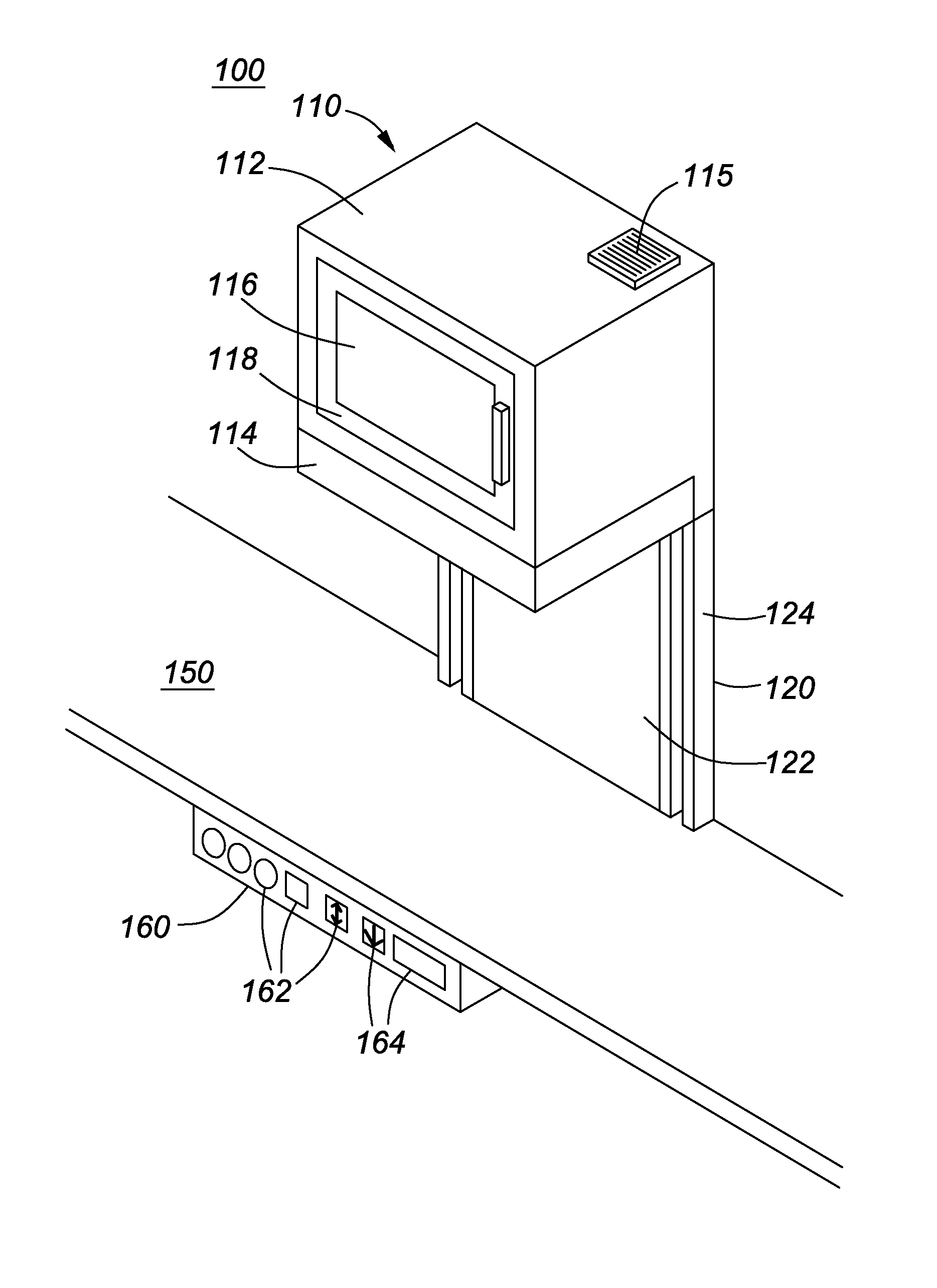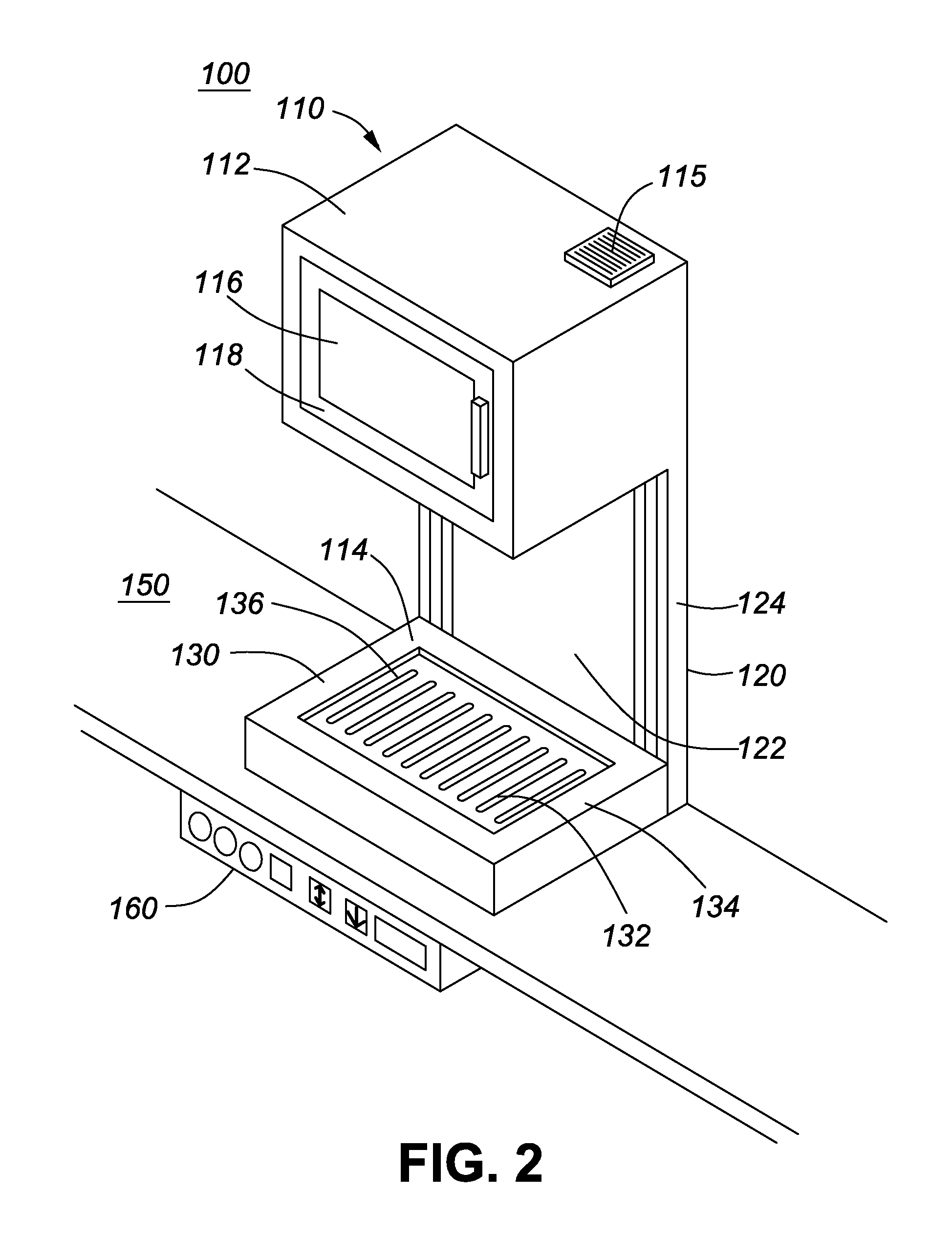Bottom-loading cooking appliance
a cooking appliance and bottom-loading technology, applied in the field of kitchen appliances, can solve the problems of people with limited mobility, limited reach or ability, and particular problems, and achieve the effect of mitigating the disadvantages of known cooking appliances and ovens
- Summary
- Abstract
- Description
- Claims
- Application Information
AI Technical Summary
Benefits of technology
Problems solved by technology
Method used
Image
Examples
Embodiment Construction
[0033]FIG. 1 illustrates a cooking appliance 100 comprising a wall-mounted unit 110, comprising a cooking chamber 112, i.e. an oven, having a bottom-opening door 114 mounted above a work area on a countertop 150. The door 114 is raised and lowered by a drive system 120, comprising guide rails 124 extending against the wall beneath the oven. A cover plate 122 hides the lift / drive mechanism, which is shown in more detail in FIGS. 3 to 8.
[0034]The door 114 is cantilevered from a support bar (not visible in this Figure) that extends between guide rails 124 on each side of the housing 122. The appliance is shown in FIG. 1 with the door closed, i.e. the door / platform 114 is raised. The drive system 120 for raising and lowering the door is low profile against the wall to leave the workspace free on the countertop underneath the oven unit 110. Controls 162 are provided by a separate unit, i.e. a remote control panel 160 that is mounted just below the countertop 150. The control panel provid...
PUM
 Login to View More
Login to View More Abstract
Description
Claims
Application Information
 Login to View More
Login to View More - R&D
- Intellectual Property
- Life Sciences
- Materials
- Tech Scout
- Unparalleled Data Quality
- Higher Quality Content
- 60% Fewer Hallucinations
Browse by: Latest US Patents, China's latest patents, Technical Efficacy Thesaurus, Application Domain, Technology Topic, Popular Technical Reports.
© 2025 PatSnap. All rights reserved.Legal|Privacy policy|Modern Slavery Act Transparency Statement|Sitemap|About US| Contact US: help@patsnap.com



